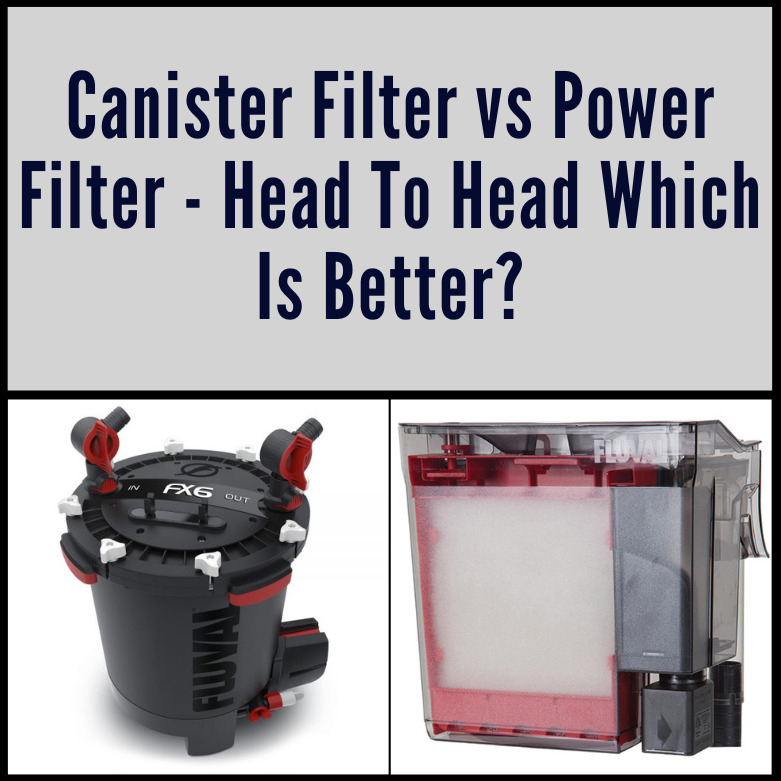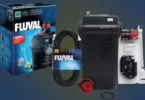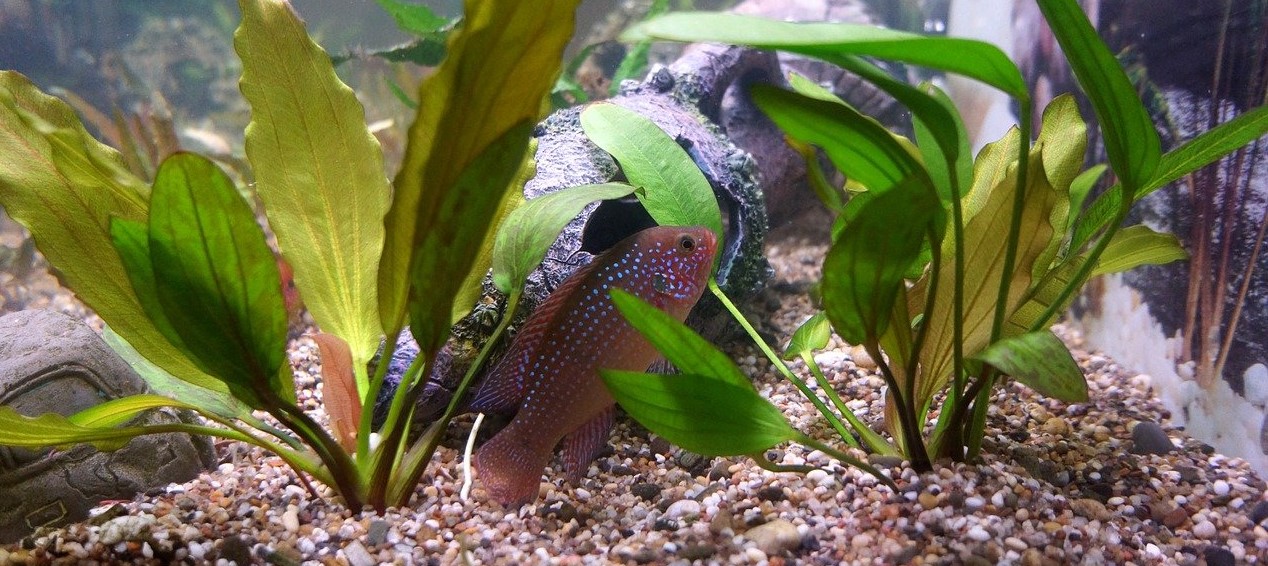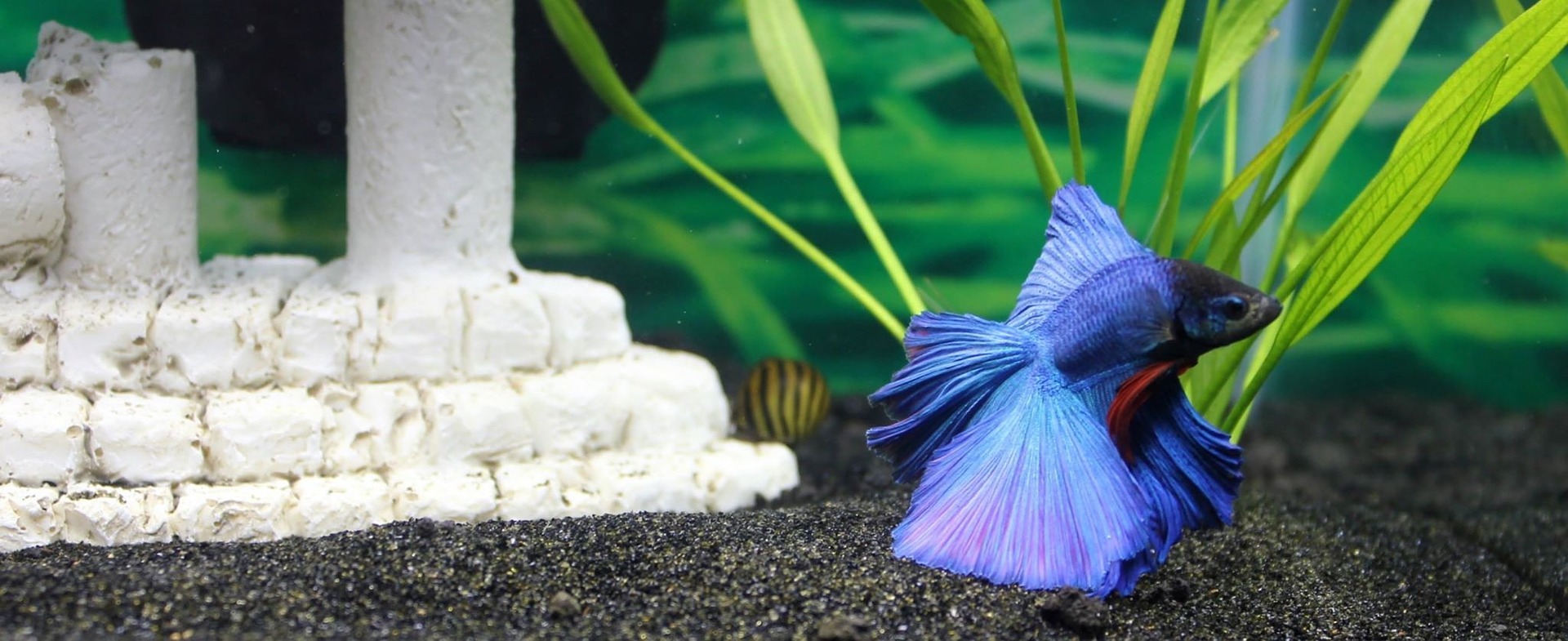Last Updated on April 22, 2023 by Coral Realm
A major decision when setting up a brand new aquarium is what filter to get. Aquarium filters can be a pretty expensive piece of kit, so you want to make sure that you get the right one. That’s where this article comes in; it puts the canister filter vs power filter head to head.
There are many different models and types of aquarium filters on the market, so the question is which one should you get?
This can be a pretty tricky question, so you want to find out as much information as possible before you commit to buying one.
Two of the most common types of aquarium filter are the power filter and canister filter. They both work to filter and clean the aquarium water but have some notable differences.
The main most obvious difference is that canister filters are more complicated, with multiple compartments and are much larger. Power filters on the other hand can be hung directly on the back of the aquarium, and are a lot more simple in their operation. This is why they are also known as hang on back filters.
As with anything, both power filters and canister filters come with their own pros and cons. We will go through both of these types of aquarium filters so you can have the information you need to see which is the best fit for you.
IN THIS ARTICLE
Canister Filter vs Power Filter – Head To Head Which Is Better?
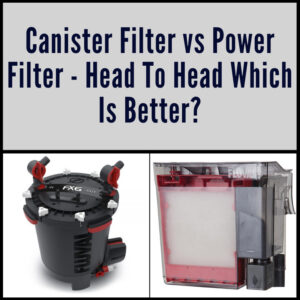
Canister Filter vs Power Filter
Check out these two classic filters; the Fluval FX6 Canister Filter and the Fluval C4 Power Filter. You can instantly see the difference in the two types of filter. In this article we will answer the question of canister filter vs power filter, which is better.
Canister filters and power filters are two types of aquarium filters that serve the same basic purpose of keeping the aquarium water clean and healthy for fish and other aquatic creatures. Here are some of the key differences between the two types of filters:
1. Filtration Method: Canister filters use a multi-stage filtration process that includes mechanical, chemical, and biological filtration, while power filters typically only use mechanical and biological filtration. Canister filters are generally considered to provide more comprehensive filtration, but they can also be more expensive and require more maintenance.
2. Size and Capacity: Canister filters are usually larger and can handle higher volumes of water than power filters, which are generally smaller and designed for smaller aquariums. Canister filters are ideal for larger aquariums or for those who keep a large number of fish.
3. Noise Level: Canister filters are typically quieter than power filters because they are housed in a separate container outside of the aquarium, while power filters are often submerged in the water and can create more noise.
4. Cost: Canister filters tend to be more expensive than power filters, but they also tend to offer better filtration and last longer.
5. Maintenance: Canister filters generally require more maintenance, as they need to be disassembled and cleaned periodically, while power filters are generally easier to maintain.
In summary, canister filters are generally considered to provide more comprehensive filtration and are better suited for larger aquariums, while power filters are more affordable and easier to maintain, making them ideal for smaller aquariums or for beginners.
Power Filters
Operation
The point of a power filter is to be a very easy and simple piece of kit. As such the operation is very simple and doesn’t need much setting up. The power filter hangs on the back of the aquarium and draws water from the tank through a tube into the filter using a pump.
This water is then cleaned, normally via a carbon filter and chemicals which purify and remove harmful substances from the water. Dirt and detritus is also removed. Depending on the model of filter you buy you can get any combination of biological, chemical, and mechanical filtration.
A combination of all three of these filtration methods is referred, as that will provide better water filtration and purification. Often a power filter will miss out on one of these methods though as space in the filter is normally quite limited.
A power filter either draws water from the tank using an air pump or water pump. As the water runs into the filter it will flow over the filter cartridge which contains the filter media. The water returns to the tank after filtration by the filter media via a spillway or overflow.
Maintenance
The power filters are simpler and smaller than the canister filters, so as you can imagine the maintenance is also easier in this type of filter. As they hang on the back of the aquarium they are easily accessible, while the canister filters are often in the tank. This really does save a lot of hassle!
Power filters normally have a removable filter tray, which contains a sponge for mechanical filtration. This can be rinsed out to remove debris and detritus, before being released back into the filter. The sponge only needs replacing when it is falling apart. When it is still intact beneficial bacteria will grow in the sponge which will act as additional biological filtration. Remember to only clean the sponge in tank water, so you don’t kill this bacteria or harm your plants and fish with the chemicals found in regular tap water.
If your power filter has chemical filtration as well, this will often be activated carbon. This cartridge will need to be replaced fairly often to ensure maximal filtration, and to ensure toxins aren’t released into the water.
Every so often the intake tubes and the pump will also have to be cleaned. Aquarium tube cleaning kits can be very handy for this.
 Price
Price
As the power filters are simpler, smaller, and generally can’t handle the volume of water that canister filters can, they are the much cheaper option.
You often get a power filter as part of the aquarium set up package, which gives you an indication that they are quite affordable. It is fairly easy and cheap to repair and find spare parts for power filters too.
As with canister filters they do come in a range of prices which indicate the volume of water they can filter, the filtration methods used, and branding.
Drawbacks
There are of course a number of drawbacks which come with a power filter. They are cheap and easy to use and maintain, but are quite inefficient when compared to canister filters.
One drawback and inefficiency is that as the filtered water is returned to the tank via an overflow, the intake siphon which sucks in water to the filter is normally directly below that spillway. That means that a large portion of the water drawn into the filter is the water that has just been filtered! This is especially true if the water is quite still, so an aquarium powerhead or aquarium wave maker can be very useful.
Evaporation is increased in the tank when you use a power filter, as the surface area of the water exposed is increased. The spillway increases this area, as does the fact that you need a space on the back of the tank for the filter. This is exposed to the air which increases water loss. This just means that you will have to top up the water level more often than usual.
Canister Filters
Operation
Canister filters are larger, more powerful, and can handle a greater volume of water than their power filter counterparts. For this reason they are more suited for larger aquariums and saltwater and planted aquariums. These types of aquariums have more life in them, which create a lot more waste which needs to be filtered.
Canister filters are normally housed outside of the aquarium, and draw water in though an intake tube and pump it back into the tank via an outlet tube. The useful thing about this is that you can put the intake and outlet tubes on opposite sides of the tank, so you don’t have the problem of the filter drawing in already filtered water, as you get with power filters.
You can also attach a powerhead or wavemaker to most models of canister filter, on the outlet, so you can create a flow of water in the tank and eliminate dead spots. Dead spots are sections of the water which aren’t drawn through the filter and become stagnant.
You can also use a spray bar, which is designed to minimize the splashing and water disturbance when the filtered water is reintroduced to the tank.
As canister filters are larger than power filters the filtration is more comprehensive. There are normally sections in the canister for mechanical, chemical, and biological filtration systems. Mechanical filtration normally comes in the form of sponges, chemical as activated carbon, and biological as porous material which encourages beneficial bacterial growth.
Maintenance
Maintenance is very important in keeping a canister filter working effectively. As a general rule you should be cleaning the mechanical filters every month, and the biological and chemical filters every couple of months. You can read our guide to cleaning a canister filter here.
Remember to only rinse filter media in tank water, never use tap water or any chemicals, as this will cause damage to your plants and fish. And when it is time to replace a portion of the media, never replace it all at once, replace a bit at a time, as this will keep the beneficial bacteria alive.
Canister filters take more effort to maintain than power filters. It can be a little messy, so bring a bucket! You need to take the filter apart and clean each component. You also need to check the intake and outlet tubes for algal buildup, which is where aquarium tube cleaning kits can come in handy.
Whilst cleaning the filter once a month is the general rule, it also depends on your aquarium, what types of fish, plants, and corals you have. Some may create more waste than others, so if you see the water getting dirty then don’t hesitate to clean out the filter. Your fish don’t want to be living in a dirty environment.
Price
As canister filters are designed to filter the water more thoroughly, and are larger and can be used for much bigger tanks they are more expensive than power filters.
Depending on branding, the volume of water the filter can handle, what filter media it has, and any attachments it can use, expect a wide variation in the pricing of canister filters. You don’t have to pay through the roof, but don’t expect a great canister filter to be cheap.
Drawbacks
There are little drawbacks with canister filters. They are considered the best way to effectively filter aquariums.
They can be used on many different types of aquarium, and as the water is not exposed to the room it is a closed system, so doesn’t have the water loss of the power filters.
One major drawback is that they can be expensive, and take more work to maintain than power filters.
Conclusion
In conclusion, canister filters offer greater filtration performance for your aquarium than power filters. They have more filter media which means that more debris, detritus, and harmful chemicals are removed from your tank. A range of aquarium filter media is available for both of these filter types.
Power filters are designed for smaller tanks, and can be very useful if you really don’t need a large powerful filter to do the job. You don’t want to just waste money after all! You can find aquarium kits, wherein you get a small tank with a built in filter. This filter is normally a power filter. An example of this is below:
Make sure you get advice and research what type of filter would be best suited for your aquarium, and you will be happy with your choice.
You may also like:
- Best Aquarium Heaters
- EHEIM Classic External Filter Review
- AquaClear Power Filter Review

